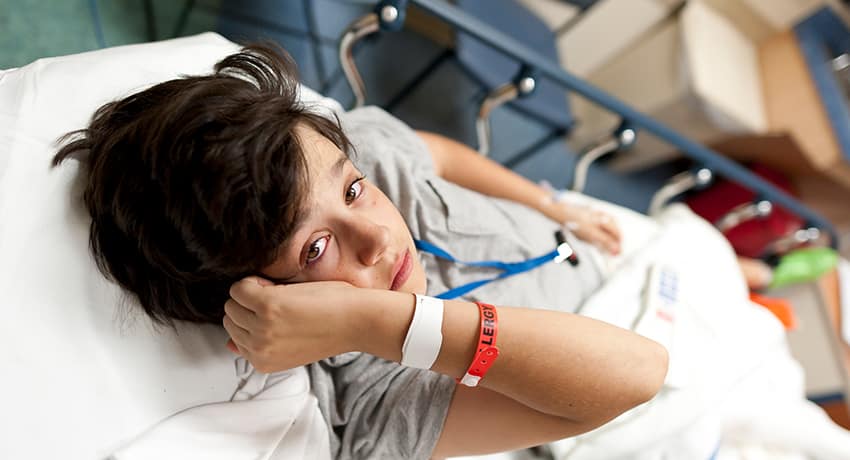Stroke does not discriminate. Though it is more common in adults, children and adolescents can also suffer from this life-threatening medical condition. For Stroke Awareness Month, Sarah J. Cavenaugh, MD, pediatrician at UT Physicians Pediatric Primary Care – Texas Medical Center, teaches you the possible causes and signs of stroke in children – and how to B.E. F.A.S.T. should it happen.
What is stroke?
Stroke, as defined by the Centers for Disease Control and Prevention (CDC), occurs when something blocks the blood supply to part of the brain or when a blood vessel in the brain bursts. Parts of the brain can become damaged or die, possibly leading to long-term disability or even death.
A stroke is sometimes referred to as a “brain attack.”
How does stroke happen in children?

“Even though it’s more common in adults, children can also suffer a stroke,” said Cavenaugh, assistant professor with McGovern Medical School at UTHealth Houston. “In fact, perinatal stroke [a stroke that happens in the immediate weeks before or after a child is born] is the leading cause of cerebral palsy in children.”
It is still uncertain why it happens in newborns and children in utero, but the pediatrician named and explained four possible causes of stroke in young people.
Blood disorders
Some blood disorders, such as sickle cell anemia or Factor V Leiden, affect blood cells and their flow. Cells that cannot move easily through the veins can clot and promote stroke.
Head/brain injuries
An accidental head injury that causes trauma to the brain may trigger a stroke. This is likely why victims of child abuse or neglect have a higher chance of stroke during their lives.
Chronic health conditions
Diabetes, high blood pressure, and high cholesterol can damage blood vessels and encourage stroke. Children are less likely to suffer from these issues, however.
Medications
Some pain relievers, antidepressants, and even oral contraceptives may increase the chance of stroke if there is an underlying health condition.
What are the signs?
“Signs of a stroke are normally quite noticeable. You’ll notice that part of your child’s body is not working the way it’s supposed to,” Cavenaugh said. “If a child has a seizure, displays paralysis, slurs their words, they may have suffered a stroke.”
A way to help remember most of the signs is B.E. F.A.S.T., which stands for balance, eyes, face, arms, speech, and time.
If your child:
• appears to be off Balance;
• cannot see well out of both Eyes;
• has a droop on one side of the Face;
• feels weakness or numbness in an Arm; and/or
• is experiencing difficulty with Speech,
• it is Time to take him or her to the emergency room or call 911.
What will happen if my child has a stroke?
At the hospital, your child will undergo a physical exam, an MRI, and possibly a CT scan. The medical team will first confirm if a stroke occurred and then determine the cause in order to treat the problem.
The key, however, is to get your son or daughter to the emergency room quickly. Literally, B.E. F.A.S.T.
“Whether or not a child fully or partially recovers depends on how quickly they receive treatment and how quickly the team can determine the cause,” the doctor said. “Your child’s best chance is in the emergency room because there is nothing a parent can do to treat a stroke at home.”


